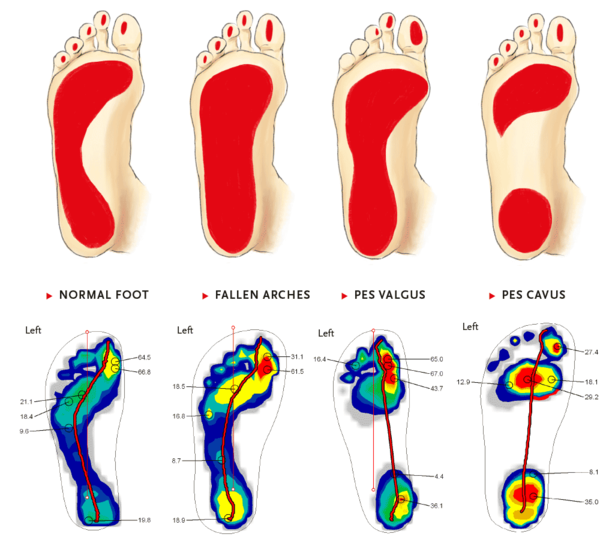The normal foot
A normal foot touches down on the outer heel, absorbs the load of the body's weight on its sole and, finally, rolls out forcefully over the big toe. There is no evidence of heightened pressure loading in the sole area.
Fallen arches (pes planovalgus)
The coloring on the foot pressure measurement image shows a flat foot strike. The spring mechanism is thus reduced in the longitudinal arch and the levels of pressure loading in the ball area are higher. The yellow and red zones illustrate this. The anatomical heel-to-toe line (shown in red) is shifted towards the inner edge o the foot. The consequences of this can be pain in the ankles, knees or back.
Pes valgus
What is particularly striking here is that, due to malalignment, the load has been completely shifted to the inner side of the foot. This translates to a smaller load area, but much higher pressure. The ankle bends at a wrong angle, leading to problems in the foot, Achilles tendon, knee or back.
Pes cavus
The superelevated longitudinal foot arch leads to pressure peaks measurable exclusively in the heel and forefoot. However, due to the reduced load-bearing area, these pressure peaks are often significant and frequently lead to splay foot or knee problems.
